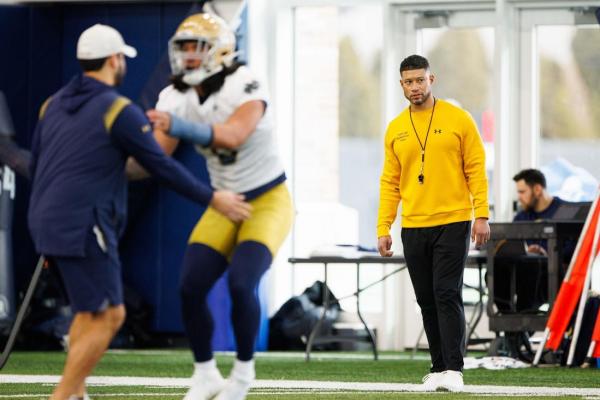MIAMI — Penn State coach James Franklin knew he was in trouble when his phone rang. Only a few days passed between Franklin’s unsolicited nomination of retired coach Nick Saban as the first ever commissioner of college football, a nomination Franklin was pretty sure the national title-collecting elder in Alabama would ultimately punt.
“He wasn’t real happy about me promoting him for the commissioner of college football, but I think we need that,” Franklin said Wednesday. “I think we need somebody that is looking at it from a big-picture perspective. And whether that is Nick Saban or whether that is (former Boise State coach) Chris Petersen or whether that is (former Wake Forest coach) Dave Clawson — who I think is a really, really smart football guy — I think having somebody in that position would be valuable for our sport and for our student-athletes.”
The de facto nomination came during Franklin’s emotional explanation of players on his roster being torn between entering the transfer portal and participating with their current team in the playoff because of the existing structure of the December schedule.
Saban tapped out a year ago and later admitted the grind became too much. Not coaching or preparing for game day, and certainly not the high-stakes games themselves. Rather the game outside the game, including recruiting within and outside a team’s roster and the unpredictable tentacles of Name, Image and Likeness pay.
With more money on the table through landmark media rights agreements and a super-sized playoff, coaches and players are reaping more benefits in most programs.
But it’s too early for players, coaches or administrators to know the full toll of a season with as many games as an NFL team would play in the regular season (17) or more.
Franklin is preparing Penn State to play for the 16th time in the 2024 season with the goal of making it to a 17th on Jan. 20, the national championship in Atlanta.
In the expanded College Football Playoff, at 12 teams for the first time, it’s possible a team could play 18 times from September to January. Notre Dame has played 14 times prior to Thursday night’s national semifinal at the Orange Bowl in Miami.
Both coaches said they’ve attempted to plan for the atypical length of the season with minor tweaks to practice schedules and weightlifting regimen and invested in sleep and nutritional studies. They are still leading college kids and full-time students. Notre Dame took finals the week of the playoff-opening win against Indiana and tried to celebrate Christmas and sneak in family time before playing Georgia in the Sugar Bowl.
“I think it’s something that we’re going to have to look at in terms of what’s best for college football — what’s best for the student-athlete experience, what’s best in a university setting, because I don’t know if this is really what it was designed to be. It’s turned into that,” Franklin said.
Texas coach Steve Sarkisian knows all about Saban, working extended college seasons while orchestrating the Crimson Tide offense. He also has a grasp of the NFL calendar. Sarkisian served as offensive coordinator of the Atlanta Falcons in 2017, when he was hired to fill the void created when Kyle Shanahan was hired by the San Francisco 49ers.
Sarkisian said in October he was tapping into his roots to prepare for the second half of the current season. He discussed details and built plans only after hearing thoughts of Super Bowl-winning coaches such as Kansas City Chiefs coach Andy Reid, Los Angeles Rams coach Sean McVay and former New England Patriots coach Bill Belichick.
“Guys who are year-in and year-out accustomed to being in the playoffs and what that looks like,” Sarkisian said. “And the length of the season and how you get your teams ready and what your bye weeks look like in the NFL, if you have an in-season bye, or if you have a first-round bye in the playoffs and how they attack that.”
Because of his base salary of $7.5 million and a reported $1.5 million on the line in postseason incentives, Franklin knows he’s also a big beneficiary of the playoff stage.
He also knows he’s only a month from submitting his final schedule plan for spring practice. The first Big Ten teams took the field in March last year for the 15-practice “offseason” work.
“I know a lot of times when coaches talk like this people roll their eyes, but I think when every decision that we make is based on finances, then we’re not making great decisions that’s in the student-athlete and the game of football’s best interest,” Franklin said. “I think there’s been conversations about — obviously you talk about just the differences between our two programs and conferences. I think it should be consistent across college football.”
Freeman built the season schedule to include the additional playoff games and accounted for the measured tax on players and coaches by shortening some practices and knocking down the number of full-contact days.
“You have a plan, you have a team, you have a sports performance team that you listen to and you talk through some different scenarios, and you’ve got to be adaptable,” Freeman said. “You’ve got to be willing to adapt based off the unpredictable things that can happen, and that’s what we’ve been able to do, and I feel like our guys will be physically ready to roll.”









